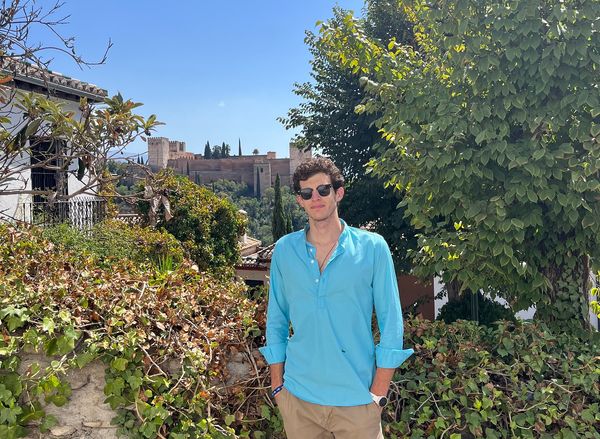What is Open Access | Academic Research Edition
Updated May 27th, 2022
Open Access (OA) is about making all scientific research content available to anyone anywhere in the world. This article will delve into the history behind the movement, talk about how licenses for Open Access articles work, and how groups of people are helping the movement along
The Concept Behind the Open Access Movement
The primary audience of research articles is usually other researchers. However, no library is typically able to gain access to every scientific journal; therefore, what Open Access does is beneficial to these researchers and many other countries, groups, or individuals. You'll learn about all of the beneficiaries in a bit.
There are two components to OA - articles are free to read and re-use. In turn, this allows other people to collaborate and peer-review articles to add value to the research. The possibility to do this impacts significant parts of the research community, the educational sector, and the public sector.
For example, the research community can work collaboratively on an article about biology or chemistry. They can find different phrases or concepts that individual researchers would not be able to uncover because of the multitude of articles they would have to sift through otherwise.
The Open Access Movement from past to present
There is a want and a need for Open Access, as well as constant growth.
Historically, there were mainly print-based academic journals, which you could access from your local library. However, this was not only expensive, but if you wanted your article distributed widely, you would send it to a journal that would take care of the entire submission process. This went on for a while, and science progressed.
In the meantime, two significant shifts occurred - digitization and subscription price increases. Some journals were asking for an absurd amount of money for libraries to publish their journals. Fast forward to the present day, this is forcing many libraries to cut expenditures by canceling or breaking up journal packages and, according to a survey by Library Journal, buying only those titles for which use or demand justifies the price.
There are over 15 disciplines where the cost of one journal exceeds $1,000, with chemistry and physics both exceeding $5,000 per title each. With prices like these, OA models have included new models of financing scholarly journals that may reduce the monopoly power of scholarly journal publishers.
A part of this monopoly power lies in the slow movement of scientific cultural practices. Scientists and scientific publishers are reticent in changing the way they do things, despite being great explorers. Many of them may say they want and support OA, but there is still a reliance on prestige or a high-profile paper. This reliance on prestige allows some journals to not respond to that pressure towards openness.
Open Access Publishing - Licenses and Re-use
The most widely used licenses in Open Access publishing are Creative Commons (CC). Typically, subscription-based publishing requires the transfer of copyright from authors to publishers so authors can receive proper credit and compensation for their work.
Alternatively, Open Access has different tiers of more permissive or restricted CC’s used by certain publishers. These include:
- CC BY license - one of the more permissive CC’s, and one of the most widely used
- Custom Open Access licenses - more commonly used by smaller academic journals
- Author nominal copyright - used by some publishers where the author retains copyright only in name while all other rights are transferred to the publisher
- A range of more restrictive CC’s are also used.
Not only can OA articles be read by virtually anyone, but they can also be reused. You would not be able to normally do that outside of Open Access because you would have to negotiate individual rights with every single publisher. In an Open Access role, all of this information is open to anyone on the internet, free and unrestricted.
Open Access Beneficiaries
We briefly mentioned the groups that benefit from OA but let’s look at them in more detail.
OA extends the reach of research beyond the immediate academic circle. Articles can be read by anyone interested (a professional in that field, a journalist, politician, or Sam from down the street).
The groups that benefit from OA include, but are not limited to:
Research funders and universities
Nowadays, many research funders and universities are doing their best to make sure the research they fund and support has the greatest possible impact. A handful of universities are also providing an institutional repository where their researchers can deposit published articles. They believe this plays an important role in Open Access mandates from funders.
Libraries and librarians
Many libraries are affected by the rising costs of scholarly journals, combined with underfunding. Because of this, many library associations have either signed major OA declarations or created their own. Additionally, librarians are at the forefront of education and outreach initiatives aimed at faculty, administrators, and others about the benefits of OA.
Citizen scientists
Most of the research in articles posted with Open Access is funded by taxpayers through government grants, therefore, the public has a right to access the results of what they have funded. There are many people who may wish to read these types of articles, such as individuals with medical conditions, amateur scholars who may be interested in a specific study, and professionals who wish to further their education in the research literature of their field. Why should anyone be restricted to just what their library can afford?
The Citizen Science Association helps in this sense, expanding the reach, impact, and relevance of science in almost every area of inquiry, online and in the field, locally and globally. Furthermore, this helps both researchers and the public better understand citizen science and brings to light the integrity and complexity of the practice.
Low-income countries
Many OA projects involve international collaboration. Oftentimes, however, scientists, health care professionals, and institutions in developing nations do not have the funds available to access scholarly literature. It is of the utmost importance to offer the necessary Open Access to relevant information for sustainable development.
Open design strategies, such as OA, can work to become culturally, environmentally, and economically appropriate to use for people anywhere in the world. Especially with globalization, which has helped spread internet access even to the world’s poorest countries.
Conclusion
Faster discoveries benefit everyone. Science is at its best when it's shared, and this can only happen when there are no restrictions to access information. Taxpayer money is already paying for everything; why not work on some models that allow broad distribution of knowledge with no limits?
No one wants to pay an arm and a leg for an article that has every possibility of being free. That article may ultimately not even end up being helpful! This does not mean that publishing costs become free, it just means that there will be alternative means of accessing information that should not be out of reach for those interested.
It’s important that research teams have these kinds of conversations. The more people that can see your work, the more they can add to it and cite you. Orvium is a part of the OA movement, offering many options for researchers, publishers, and reviewers alike. To improve your manuscripts, increase your publishing opportunities, and have it peer reviewed before publishing, get started with Orvium today.
Additionally, check out the Orvium website for more of how we get involved, as well as information about our engineers, researchers, and entrepreneurs.
Watch a fun animated video explaining more Open Access information below:




